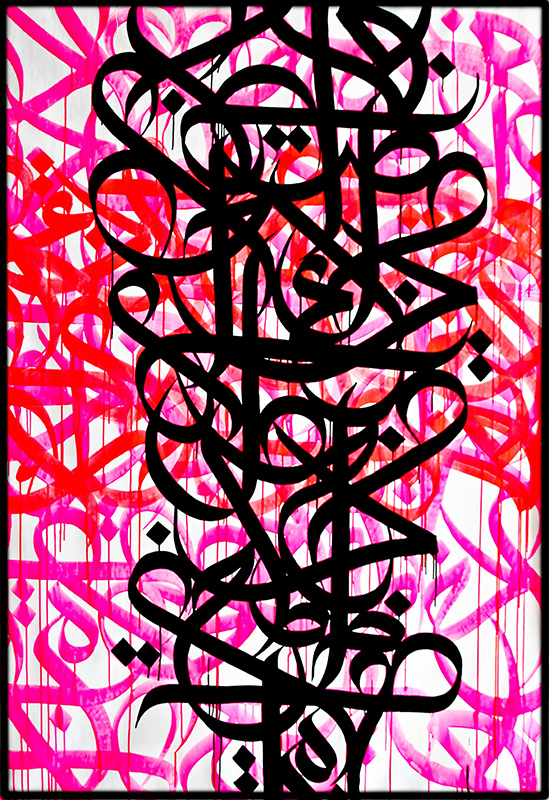France/Tunisia
Pamudu Tennakoon
One of the most famous calligraffiti artists today, eL Seed was born in 1981 to Tunisian immigrants in Le Chesnay, on the outskirts of Paris. His street name, eL Seed, is a play on the name of the medieval Spanish hero, El Cid. Currently based in Dubai, United Arab Emirates, eL Seed started out as a street artist painting walls in and around Paris in French and English. As he explains, “I like graffiti because it brings art to everyone. I like the fact of democratizing art.” 1
As a child, eL Seed learned a Tunisian dialect of Arabic; in order to immerse himself fully in his Tunisian heritage, however, he learned traditional Arabic calligraphy. His integration of Islamic calligraphy and graffiti, a modern art form, creates a harmony between past and present, art and culture.

Acrylic on canvas
74.8 x 51.2 in (190 x 130 cm)
Collection of Drs. John and Diane Chuback, Courtesy of Leila Heller Gallery
As he moved from graffiti to calligraffiti, eL Seed turned to the representation of poetic verses, including those from the Qur’an. In further developing his work, eL Seed notes that he “stopped writing the meaning [translation] in English or French as a way of fighting this kind of cultural imperialism, where you need to translate to people so they can understand. For me it was a way to invite people to my culture by not writing the meaning, so that the people who are really interested will try to understand.” 2 He also refrained from signing his work, thus removing his identity and inviting the work to stand alone.
One of his more recent works on canvas, In the desert of language, calligraphy is the shade where I rest (2013), is a poetic reflection of his artistic journey and homage to the beauty of calligraphy.
- Catriona Davies, CNN, “Tunisian artist graffitis minaret, fights intolerance,” Last modified Sept. 20, 2012. Accessed April 4, 2014. http://www.cnn.com/2012/09/19/world/meast/el-seed-grafitti-minaret/. ↑
- Cedar Pasori, Complex.com, “Interview: eL Seed Talks Calligraffiti, the Jara Mosque, and Painting Tunnels in Doha,” Last modified Sept 11, 2013. Accessed April 4, 2014. http://www.complex.com/art-design/2013/09/el-seed-interview. ↑
